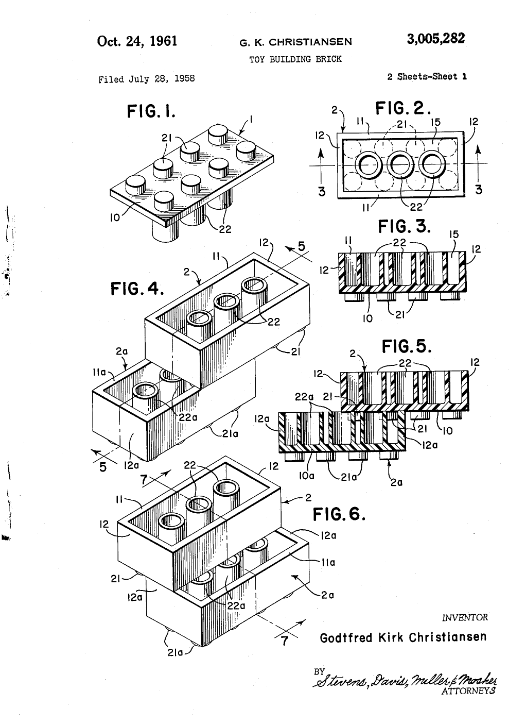Introduction
The Lego world keeps expanding! From the recent release of Despicable Me 4 sets featuring those mischievous Minions to their ongoing collaboration with McLaren, a renowned Formula One constructor, Lego continues to impress with its ability to cater to diverse audiences and create innovative experiences. But what’s the secret behind Lego’s enduring success and ability to secure such high-profile partnerships?
Beyond the colorful plastic bricks lies a secret weapon: Lego’s robust patent portfolio. These patents haven’t just protected their iconic brick design; they’ve fueled constant innovation and secured Lego’s place as a global phenomenon.

Lego’s journey started in 1932 with wooden toys in Denmark. They later transitioned to plastic, and by 1958, they’d developed the now-famous interlocking design. This ingenious design, featuring hollow studs and corresponding tubes, allows for limitless connections.
Lego’s 1st patent
But how did Lego protect this revolutionary invention? In 1958, they filed a patent (US3005282A) safeguarding their unique brick design in key markets. This patent ensured no competitor could replicate their idea, allowing Lego to focus on developing new experiences for builders of all ages.

Here’s the gist in simpler words:
- This Lego patent describes a special design for their building blocks.
- Imagine each block has bumps on one side and holes on the other.
- These bumps and holes fit together perfectly, like a puzzle.
- Because of this design, you can connect the blocks in any direction you want – up, down, sideways – to build anything you can imagine!
This patent is just the tip of the iceberg.
Stay tuned for our next blog post where we delve deeper into the world of Lego patents and explore how they’ve shaped the brand we know and love!
Need to know anything else? We got you covered!

